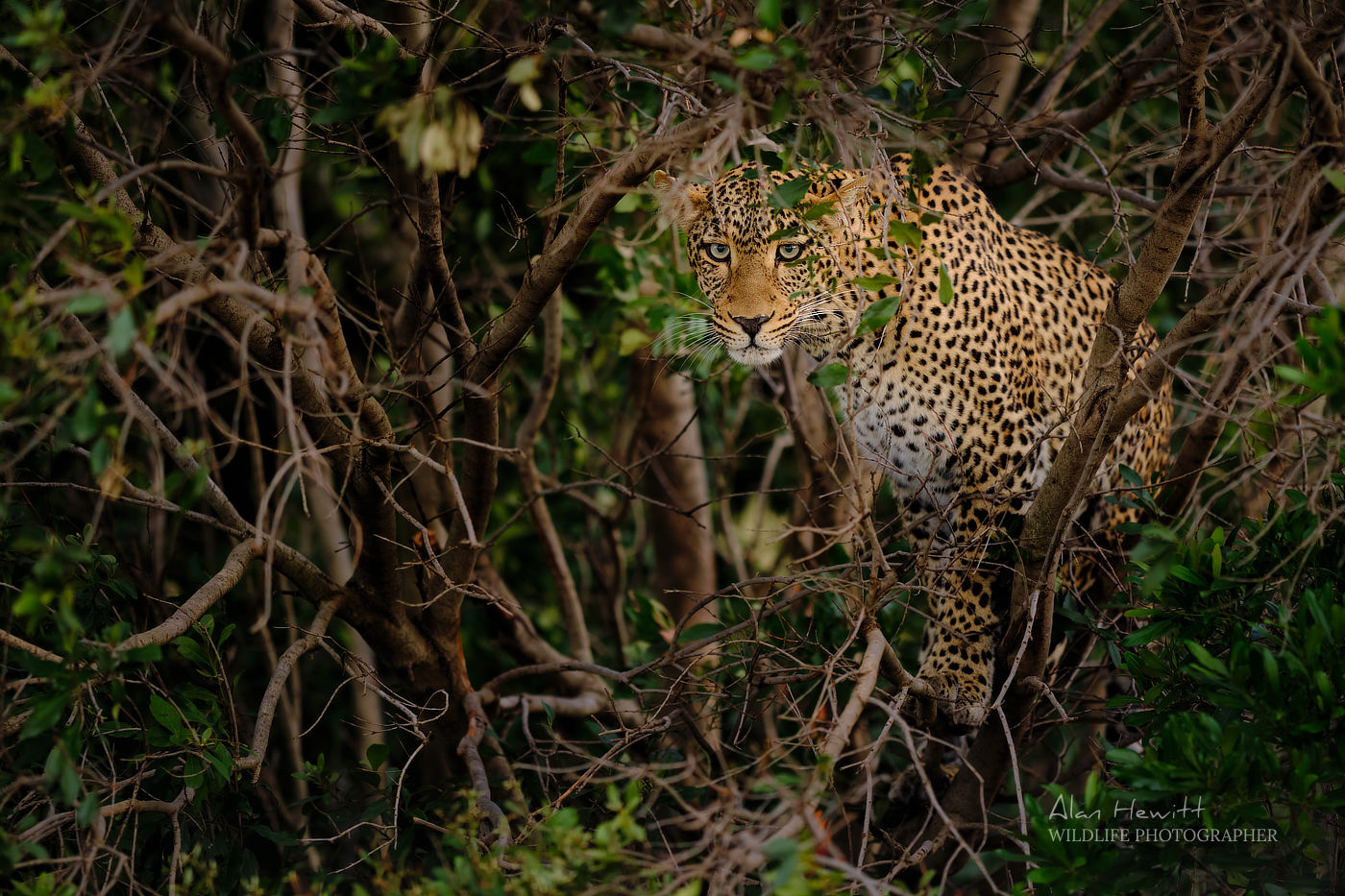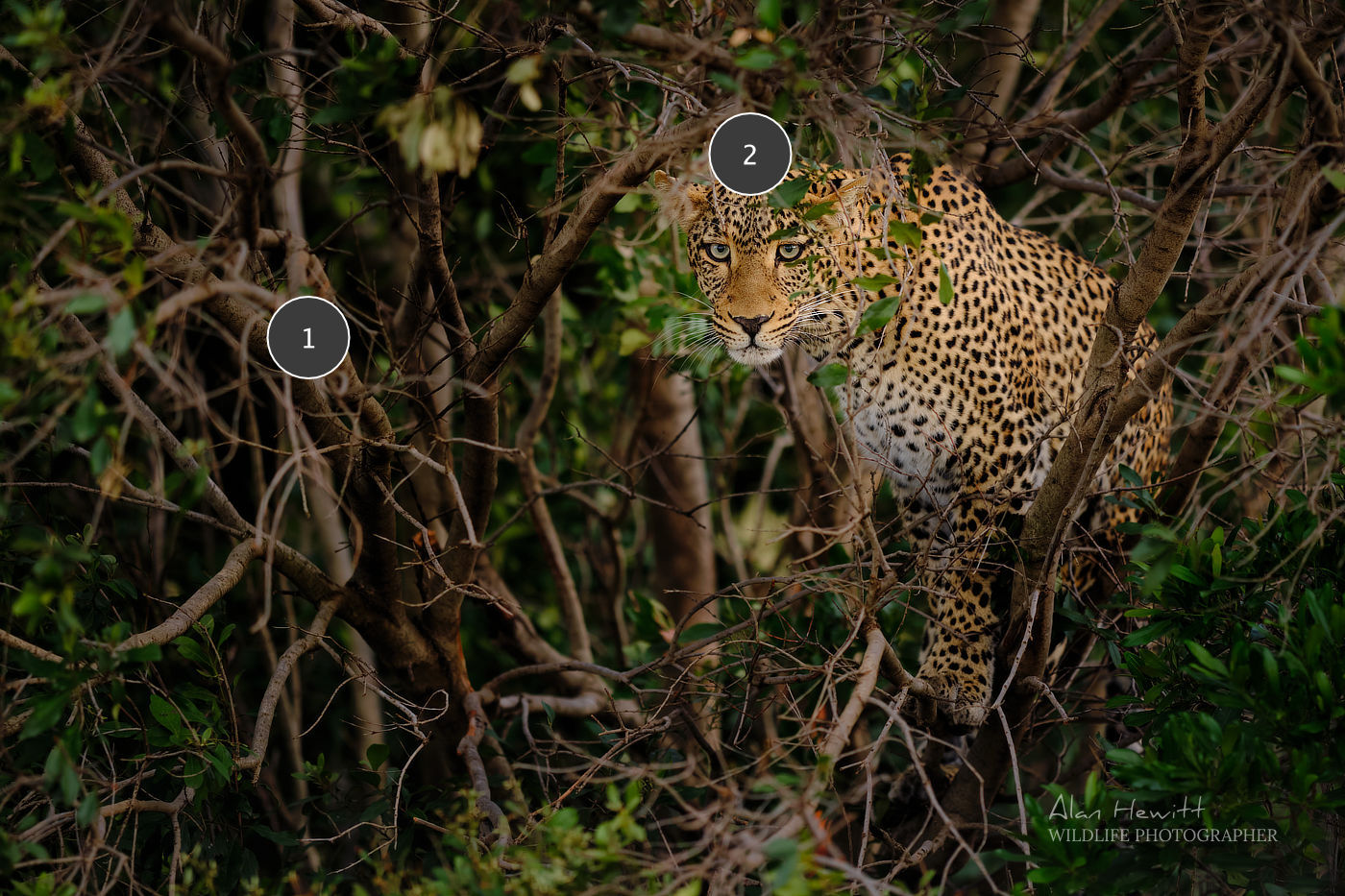THE STORY
During the final morning drive of our 2019 Maasai Mara photography safari we were hoping to give our group the opportunity to photograph a leopard. Despite previous regular and recent sightings with good photography opportunities, they had been elusive during this particular week.
We drove out over the Ol Choro Conservancy, stopping to photograph a juvenile giraffe we had spotted regularly in the area then paused again to get a feel of what else may be going on.
We picked up on the distant sound of barking, the unmistakable sound of a jackal’s distress call. By listening, we could determine the rough area of foliage it was coming from, but not very accurately. What we were more confident of was this represented a strong possibility of a leopard!
We spotted two hyenas also reacting to the barking. Both were heading towards the same location from different areas. We roughly transected the bearings they were both heading in which coincided with the distress call to give us a better location to proceed to.
As is often the case, we find the predator by looking for the prey and its reactions or in this case, the predator’s predator or scavanger!


| Equipment | Focal Length | Aperture | Shutter Speed | ISO | |||
|---|---|---|---|---|---|---|---|
| FUJIFILM X-H1 |  |
XF200mm f/2 | 200mm | f/2 | 1/140 | 800 | |
When we arrived at the Leopard’s location, the Hyena’s presence had caused enough intimidation for it to seek refuge in a tree. This is a common strategy for leopards which are threatened by other predators. Contrary to popular belief, hyenas are not solely scavangers. They represent a formidable foe to all other species, including the apex predators.
SET UP
The Leopard remained in the tree for a few minutes and I was keen to get a shot with eye contact and with the nose and mouth clear of foliage. I set up my camera and lens on my monopod to take the strain while I waited for the opportunity, keeping a single continuous autofocus point around the eyes.
When the leopard made eye contact, I squeezed the shutter button and took a few shots on a continuous high burst setting.
The camera to subject distance was ideal for the XF200mm f/2 lens. Using f/2 provided two advantages. Firstly, faster shutter speeds and secondly, it created a shallow depth of field to provide balance in helping the subject stand out against the foliage.
Giving a a significant amount of the composition to the foliage and habitat was necessary to depict the natural history story. The f/2 aperture and some subtle radial filter shadow work in post-processing helped manage this balance.
Compositionally, placing the leopard near the right third achieved two objectives. Firstly, it avoided including brighter sky to my right which was breaking through some of the dense foliage and creating distracting hotspots.
Secondly, I think the composition suited the position of the leopard. Although we have eye contact, its body is consistent with right to left movement and benefits from this space.
HABITAT – COMPLIMENTARY OR DISTRACTION
I’m a strong advocate of trying to photograph a species in the context of its habitat when the opportunity presents itself. It’s one of a few different ways we can depict a natural history story. But, there is a fine line between keeping the subject as a strong focal point and the habitat as complimentary and part of the story rather than it competing with the eye or becoming a distraction.
For me, this shot works as it depicts a leopard in its natural habitat and captures its behaviour. But, I would respect any opposite opinion entirely as it is also very subjective. Let me know your thoughts in the comments below!


